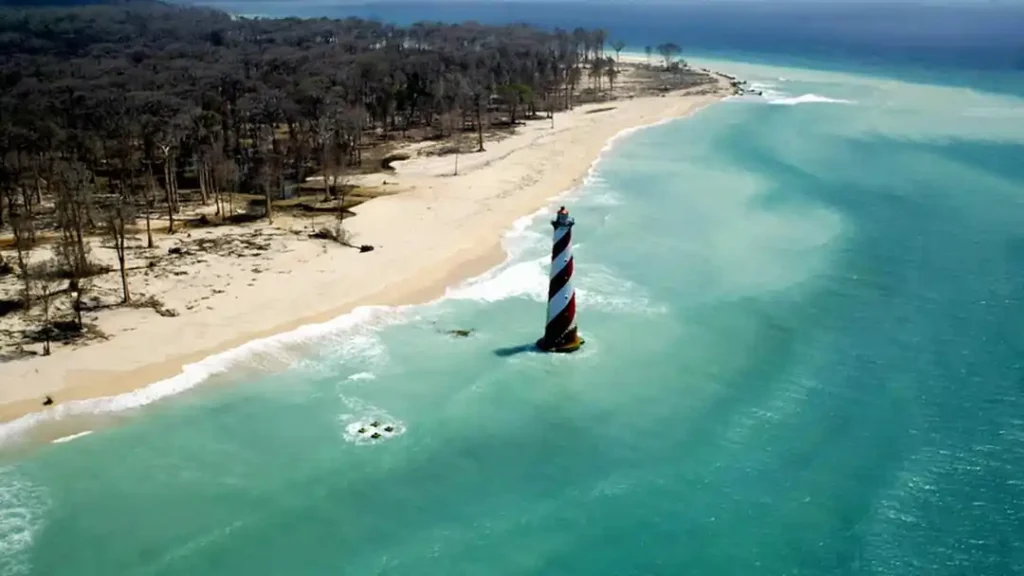New Delhi: The Great Nicobar Infrastructure Project, a transformative initiative to position Great Nicobar Island as a strategic and economic hub, has reached a critical phase with the release of social impact assessment (SIA) reports for its Trunk Infrastructure Road and Greenfield International Airport components. Mandated by the Right to Fair Compensation and Transparency in Land Acquisition, Rehabilitation and Resettlement Act, 2013, these reports highlight the projects’ potential to drive economic growth while grappling with significant concerns from indigenous tribes and local residents. With an estimated cost ranging from ₹72,000 crore to ₹81,800 crore, the initiative encompasses an international container transshipment terminal, an airport, a power plant, and a township, set against the ecologically sensitive Sundaland Biodiversity hotspot.

Trunk Infrastructure Road: Economic Promise Meets Tribal Resistance
The final SIA report for the Trunk Infrastructure Road, prepared by Ranchi-based Atlas Management Consultancy Services (AMCS) Private Limited, endorses the acquisition of 87.7902 hectares of private land to construct a main road and subsidiary roads. The report asserts that the project’s benefits—improved connectivity, job creation, and economic revitalization—far outweigh any potential costs to stakeholders. It addresses the island’s pressing challenges, including limited employment opportunities that have driven youth out-migration, advocating for a restructured economic framework that balances tribal traditions with modern aspirations for inclusive growth.
The assessment adhered to Section 5 of the RFCTLARR Act, 2013, conducting two public hearings with landowners notified 21 days in advance through multiple channels. Representatives from the Tribal Council of Little and Great Nicobar attended these meetings, but co-attendees note that their concerns, primarily about the project’s impact on tribal lands, were not recorded in the final document. On August 11, the council responded to the draft SIA, rejecting claims of extensive consultations with the Shompen and Nicobarese tribes. The council stated that its members were unaware of the assessment and that west coast villages, such as Pulo Baha and Pulo Bhaabi, were excluded from discussions. While supportive of basic infrastructure improvements, like repairing the road to New Chingenh, the council emphasized that this support does not extend to a large-scale project that threatens forests and tribal areas.
In contrast, the SIA report suggests that tribal communities, with the Nicobarese being more receptive than the Shompens, support the road project. It claims the proposed road alignments align with their preference for coastal settlements and do not disrupt their way of life. Efforts to contact AMCS for clarification on September 5 were unsuccessful, with no response received by press time.
Local landowners have expressed significant frustration over the compensation framework. Ajaib Singh, a landowner in Laxmi Nagar, criticized the inadequate compensation rates for trees, which require seven years of investment in time, money, and labor to bear fruit. “We relocated from Punjab for government-allotted land, and now they want to take it back,” Singh said, demanding land-for-land exchanges to mitigate losses. The draft SIA, released in June, projected substantial employment and business opportunities but noted the necessity of felling numerous trees and claimed tribal consent for land diversion. A Union environment ministry response in the Rajya Sabha on August 7 revealed that 130 hectares of tribal reserve land will be diverted for the project.
Union Environment Minister Bhupender Yadav, in August 2024, assured “exemplary mitigation measures” to minimize environmental harm while prioritizing strategic and defense interests. However, an anonymous researcher with experience in the islands criticized the SIA for overlooking the impacts on indigenous communities and dismissing landowners’ concerns about transparency, compensation rates, and unclear acquisition extents. The researcher questioned the haste in conducting the assessment before finalizing the road alignment, highlighting a lack of clarity in the planning process.
Greenfield International Airport: Residents Demand Equitable Compensation
The SIA for the Greenfield International Airport, a key component of the ₹72,000-crore initiative, was submitted to the Andaman and Nicobar administration in late July 2025 by Delhi-based Probe Research and Social Development Pvt. Ltd. The project spans 834.6 hectares, including nearly 400 hectares of private land, and affects 263 families in Gandhi Nagar and Shastri Nagar villages in Campbell Bay taluk. These families, primarily ex-servicemen settled on the island since the 1970s, rely heavily on coconut and betel nut farming for their livelihoods.
The SIA details the loss of approximately 30,000 coconut trees, 60,000 betel nut trees, 450 mango trees, and additional guava and banana trees due to land acquisition. Prahlad Singh, 43, Pradhan of Laxmi Nagar Gram Panchayat, which includes the affected villages, recounted the community’s historical struggles, including losses from the 2004 tsunami. “This is another episode of displacement and hardship,” he said, demanding land-for-land compensation, ₹50,000 per coconut tree, employment for one member per affected family, and commercial spaces near the proposed airport to offset economic losses.
E S Rajesh, a pramukh and samiti member of Laxmi Nagar Gram Panchayat, criticized the SIA for failing to address the project’s impact on water resources, a critical issue given potential shortages from construction activities and an anticipated influx of tourists. The report also remains silent on the effects on the indigenous Great Nicobarese and Shompen tribes, despite the airport encroaching on 8.88 sq km of deemed forest within tribal reserves. On June 17, over 100 former bureaucrats under the Constitutional Conduct Group condemned the draft SIA for neglecting consultations with these tribes, a concern echoed by social and wildlife scientists who urged a thorough evaluation of the project’s impact on indigenous communities.
A multi-disciplinary expert group, comprising two independent social scientists, local panchayat members, and government officials, met on August 12 to review the SIA, as required by the LARR Act, 2013. The group scheduled a field visit to the island on August 26 and 27 to further assess the project’s implications. The Andaman and Nicobar administration’s Directorate of Social Welfare Department did not respond to queries regarding the SIA.
Project Scope and Systemic Challenges
The Great Nicobar Holistic Development Project, with its four core components—international container transshipment terminal, airport, power plant, and township—aims to redefine the island’s role on the global stage. However, discrepancies in reported costs, ranging from ₹72,000 crore to ₹81,800 crore, underscore the need for greater financial transparency to maintain public trust.
Tribal displacement, a recurring challenge in development projects like the Sardar Sarovar Dam and Ken Betwa River Linkage, poses risks of livelihood loss, cultural erosion, psychological distress, and social disintegration. Rehabilitation efforts under the RFCTLARR Act, 2013, face obstacles such as insufficient compensation, limited community participation, bureaucratic inefficiencies, and corruption. To address these, empowerment frameworks like the Panchayats (Extension to Scheduled Areas) Act (PESA), 1996, and the Forest Rights Act (FRA), 2006, grant Gram Sabhas decision-making authority over land and resources. Additional initiatives, such as Eklavya Model Residential Schools for education and Van Dhan Vikas Kendras for livelihood diversification through minor forest produce, aim to uplift tribal communities. The PM JANMAN scheme further supports holistic tribal development.
Balancing Ecology and Strategic Ambition
Great Nicobar’s location within the Sundaland Biodiversity hotspot, covering the western Indonesian archipelago, demands robust environmental safeguards. Minister Yadav’s assurances of mitigation measures aim to reconcile development with conservation, but experts stress the need for comprehensive impact assessments to protect the island’s unique ecosystem. Visual documentation, including images of tribal meetings and project sites, highlights the human and ecological dimensions of the initiative.
The SIA process, defined by the United Nations Environment Programme (UNEP) in 2007 as a tool for researching and managing social changes from development projects, is critical to ensuring equitable outcomes. However, the omission of tribal concerns and inadequate addressing of water resource impacts in both SIAs raise questions about the assessments’ thoroughness.
Path Forward: Transparency and Inclusion
As India advances its strategic vision for Great Nicobar, addressing the concerns of residents and indigenous tribes through transparent and inclusive processes is paramount. The SIA reports signal significant economic potential, including job creation and enhanced connectivity, but they must bridge gaps in stakeholder trust to achieve sustainable progress. Landowners’ demands for fair compensation and tribal communities’ calls for meaningful consultation highlight the need for a balanced approach that respects both development goals and local rights.
The Great Nicobar Infrastructure Project stands at a crossroads, with the potential to model responsible development in a sensitive region. By prioritizing transparency, equitable compensation, and robust environmental safeguards, India can ensure that the project delivers on its promise while safeguarding the island’s cultural and ecological heritage.
FAQs
1. What is the Great Nicobar Infrastructure Project?
It’s a development initiative including a transshipment terminal, airport, power plant, and township, costing ₹72,000 crore to ₹81,800 crore, aimed at transforming Great Nicobar Island into a strategic hub.
2. What do the SIA reports say about the road and airport projects?
The road SIA supports acquiring 87.7902 hectares of private land and 130 hectares of tribal reserves, citing economic benefits. The airport SIA, covering 834.6 hectares, affects 263 families and projects job growth but overlooks tribal impacts.
3. What are the concerns of the Tribal Council and residents?
The Tribal Council disputes consultation claims, fearing forest and tribal land loss. Residents demand land-for-land compensation, higher tree rates (e.g., ₹50,000 per coconut tree), jobs, and transparency.
4. How are environmental and tribal issues addressed?
Minister Yadav promises mitigation measures, but SIAs lack tribal and water resource impact assessments. Empowerment laws and schemes like PM JANMAN aim to support tribes.
5. What ensures transparency and compliance?
SIAs followed RFCTLARR Act procedures, with public hearings and an expert group review, including a field visit. However, unrecorded tribal views and unclear acquisition extents raise concerns.

